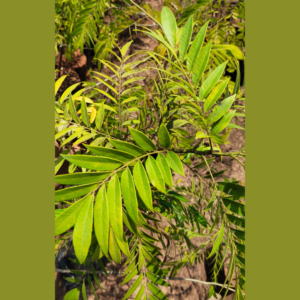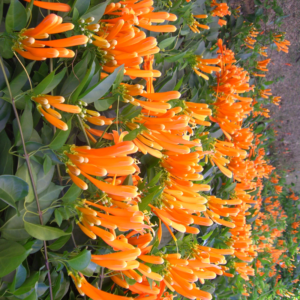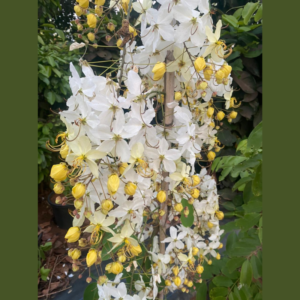Foliage in the wild is frequently transitory, but it becomes more permanent when it is cultivated. The leaf colour of Z. candida (seen in the photo) ranges from a bright grassy green to a broad glaucous coloured foliage found in Z. drummondii. When grown in intense light, the leaf of a handful of the species takes on an unique bronze colour. The leaves of this species differ in size from dark green and tiny grassy leaves in Z. jonesi and Z. longifolia to larger, glaucous leaves in Z. drummondii. Z. lindleyana from Mexico has the largest leaves of all. Usually sold as a cultivar named ‘Horsetail Falls,’ this species has attractive broad leaves that resemble Hippeastrum.
The flowers of this plant range in colour from white to yellow (in varied hues ranging from lemon to sulphur) to pink. Zephyranthes have flower stalks that are erect and hold an upward facing or gently nodding bloom. The six-petaled funnel-shaped flowers can be crocus-shaped, but they can also open flat, as in Z. jonesii, or even reflex slightly.
Some species have a sweet, pleasant scent in their blossoms. Fragrance appears to be recessive in crosses, however there are a few species or hybrids that all carry the characteristic, including Z. drummondii (white), Z. morrisclintae (pink), and Z. jonesii (light yellow). At least two of these flowers emerge at night, making them appealing to nocturnal insects. The flowers usually only survive a day or two, but additional flowers may arise in a succession of blooms, especially if the weather is damp or rainy.
Various species of the genus may bloom just in the spring or repeat and continue into the autumn, frequently a few days following rainstorms, earning them the nickname rain lilies. Blitzes of synchronous bloom, nicknamed “blitzes” by breeders, are part of their ornamental appeal, but they’re also occasions when breeders might create novel hybrids. [6]
Without the naturally induced drought and rain that happens in nature, most cultivated plants will bloom. Greenhouse-grown plants bloom profusely, although they do so in cycles. Z. primulina has one of the longest flowering periods of all the species, blooming from April to October. Despite being apomictic, it is a popular cross parent due to its rapid repeat flowering feature and long bloom season. Other species, such as Z. morrisclintae, appear to only bloom in the spring. The majority of these plants can be vegetatively propagated using offsets or twin scaling. A handful of them, such as Z. clintae, take a long time to reproduce.
Vegetative preservation of unusual phenotypes is possible. Seeds are used for sexual reproduction. The apomictic species freely reproduce the maternal phenotype and set seed.





Reviews
There are no reviews yet.